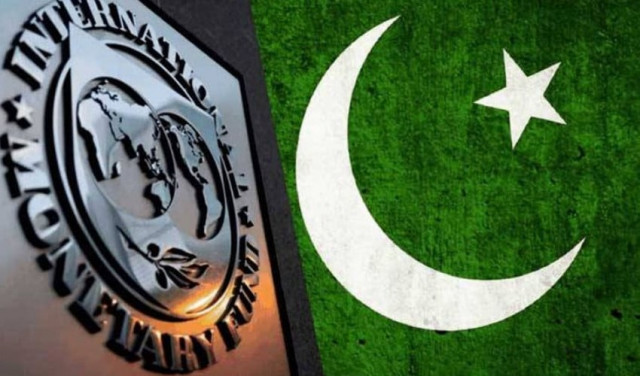Islamabad:
Pakistan has only fulfilled two out of five important fiscal conditions set by the International Monetary Fund (IMF) for the second review of the $ 7 billion Bailout package, as provinces could not generate the required cash surplus and the federal government missed its tax targets.
Despite these deficits, the government is unlikely to face serious obstacles during the upcoming review interviews – which are expected to begin next month – to release the next $ 1 billion tranches due to progress with other critical benchmarks.
According to a summary of fiscal operations released by the Ministry of Finance, the provinces did not fell on saving the targeted RS1.2 trillion in the last financial year, which ended in June. A sharp increase in provincial expenses helped to lack the cash surplus target.
Likewise, the Federal Revenue Council (FBR) missed its two key conditions for collecting RS12.3 trillion total revenue and RS50 billion from retailers under the Tajir Dost scheme in the last financial year.
But the mother of all fiscal matters – which generates a primary budget surplus of RS2.4 trillion – has been met along with the total revenue collected by the four provinces.
This is the second year in a row with the primary profits and the highest in 24 years that surpasses the IMF goal. The Ministry of Finance tried hard to stay on fiscal policy, but the downturn came from the provincial capitals that were not in control of the federal government.
The total tax deficit also reduced to 5.4% of GDP or RS6.2 trillion, which was good below both the original target of 5.9%. The Financial Secretary kept a tight control of the expenses throughout the financial year.
The IMF has set approx. 50 Terms of Bailout Package of $ 7 billion; Some of them are monitored quarterly and annually and are associated with the approval of the loan trans.
The government has managed to achieve relative fiscal stability, but the official data showed that the net revenue of the federal government was still RS1.2 trillion less than its need for only two heads; Interest payments and defense expenses. The rest of the expenses are incurred by taking out more loans.
Against a primary surplus target of RS2.4 trillion, the federal government reported a surplus of RS2.7 trillion or 2.4% of gross domestic product (GDP), according to the ministry.
The Ministry of Finance had to execute eleventh hours of management to ensure that the primary excess target was met after the provinces could not throw promised cash surplus and the federal development expenses shot up beyond the Ministry of Finance’s expectations.
The provincial governments had given the IMF and the federal government’s understanding of generating RS1.2 trillion cash surplus. However, the four provinces generated a cash profit of RS921 billion, missing the IMF target with 280 billion.
A collapse of provincial performance shows that Punjab with a total income of RS4 trillion used RS3.6 trillion, generating a profit of RS348 billion. However, the province recorded a statistical discrepancy of RS41 billion, mainly due to the expenses below the line to retire.
Punjab used RS1.03 trillion on development, which was almost equal to the federal development costs over Pakistan. Sindh reserved a cash profit of RS283 billion after using RS2.3 trillion, which was good under its total revenue. The province also reported RS48 billion statistical discrepancy.
Khyber-Pakhtunkhwa (KP) recorded a budget surplus of RS176 billion with RS1.5 trillion in income and RS1.3 trillion in expenses. KP also had a statistical discrepancy of RS155 billion.
Balochistan generated a profit of RS113 billion, which means the province has more revenue than its needs. Its total expenses amounted to RS767 billion against RS881 billion income. In April this year, the federal government increased the oil tax rate by RS8 per year. Liter in the name of financing Balochistan roads.
The provincial governments enjoy significant fiscal flexibility due to increased revenue under the National Finance Commission (NFC) Award.
Planning Minister Ahsan Iqbal has suggested the Prime Minister to review the current NFC award by adding new benchmarks and performance evaluation parameters to ensure that enormous resources are spent on people’s welfare.
The provinces recorded tax collection of RS979 billion in the last financial year, which exceeded the IMF target by a margin of RS58 billion. The federal government’s tax revenue benefit remained encouraging, but it missed the most important goals.
FBR could not collect any significant income under the Tajir Dost scheme against the target of RS50 billion for the last financial year. The merchants’ income tax contributions through withholding taxes also remained insignificant compared to the RS5555555555555555555555555555555555555555 -billing people people ones years.
Against the IMF-provided revenue target of over RS12.32 trillion, the FBR RS11.74 trillion.
Thanks to the central bank and millions of people paying petroleum tax, the non-tax revenue over RS5.6 trillion, higher by 30%. The Petroleum Levy collection amounted to RS1,22 trillion after the prime minister increased the rates to RS78 per year. Liter.
On the expenditure side, the federal government used a total of RS17.1 trillion, where current expenses reached RS15.8 trillion. This represented an RS2.3 trillion or 15% increase in total expenses compared to the same period last year, primarily due to rising interest payments.
The federal government paid RS8.9 trillion in interest costs, an increase of RS729 billion from the previous year. Defense expenses amounted to RS2.2 trillion, higher by 18%.
After distributing the provincial share of RS6.9 trillion, the federal government’s net income on RS9.9 trillion. This was RS1.2 trillion less than the total cost of interest and defense.
The Ministry of Finance said its primary current expenses remained well within the targeted ceilings. The primary reason for this was lower releases of subsidies that only stood at only 49% of the assigned target. The federal PSDP expenses rose to RS1.05 trillion, which was 43% higher than the previous fiscal year.



